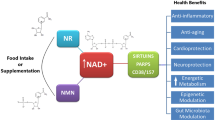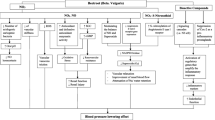Abstract
Purpose
The present study investigated the underlying mechanism associated with the hypocholesterolemic activity of blueberry anthocyanins by examining its effect on fecal sterol excretion and gene expression of major receptors, enzymes, and transporters involved in cholesterol metabolism.
Methods
Hamsters were divided into three groups and fed a 0.1 % cholesterol diet containing 0 % (CTL), 0.5 % (BL), and 1.0 % (BH) blueberry anthocyanins, respectively, for six weeks. Plasma total cholesterol (TC), triacylglycerols (TAG), and non-high-density lipoproteins cholesterol (non-HDL-C) were measured using the enzymatic kits, and the gene expression of transporters, enzymes, and receptors involved in cholesterol absorption and metabolism was quantified using the quantitative PCR. GC analysis was used to quantify hepatic cholesterol and fecal acidic and neutral sterols.
Results
Dietary supplementation of 0.5 and 1.0 % blueberry anthocyanins for 6 weeks decreased plasma TC concentration by 6–12 % in a dose-dependent manner. This was accompanied by increasing the excretion of fecal neutral and acidic sterols by 22–29 % and 41–74 %, respectively. Real-time PCR analyses demonstrated that incorporation of blueberry anthocyanins into diet down-regulated the genes of NPC1L1, ACAT-2, MTP, and ABCG 8. In addition, blueberry anthocyanins were also able to down-regulate the gene expression of hepatic HMG-CoA reductase.
Conclusion
The cholesterol-lowering activity of blueberry anthocyanins was most likely mediated by enhancing the excretion of sterols accompanied with down-regulation on gene expression of intestinal NPC1L1, ACAT-2, MTP, and ABCG 8.


Similar content being viewed by others
References
Prior RL, Cao G, Martin A, Sofic E, McEwen J, O’Brien C, Lischner N, Ehlenfeldt M, Kalt W, Krewer G, Mainland M (1998) Antioxidant capacity as influenced by total phenolic and anthocyanin content, maturity and variety of Vaccinium species. J Agric Food Chem 46:2586–2593
Basu A, Du M, Leyva MJ, Sanchez K, Betts NM, Wu M, Aston CE, Lyons TJ (2010) Blueberries decrease cardiovascular risk factors in obese men and women with metabolic syndrome. J Nutr 140(9):1582–1587
Krikorian R, Shidler MD, Nash TA, Kalt W, Vinqvist-Tymchuk MR, Shukitt-Hale B, Joseph JA (2010) Blueberry supplementation improves memory in older adults. J Agric Food Chem 58:3996–4000
Kay CD, Holub BJ (2002) The effect of wild blueberry (Vaccinium angustifolium) consumption on postprandial serum antioxidant status in human subjects. Br J Nutr 88(4):389–397
Seeram NP (2008) Berry fruits for cancer prevention: current status and future prospects. J Agric Food Chem 56:630–635
Adams LS, Phung S, Yee N, Seeram NP, Li L, Chen S (2010) Blueberry phytochemicals inhibit growth and metastatic potential of MDA-MB-231 breast cancer cells through modulation of the phosphatidylinositol 3-kinase pathway. Cancer Res 70(9):3594–3605
Kim H, Bartley GE, Rimando AM, Yokoyama W (2010) Hepatic gene expression related to lower plasma cholesterol in hamsters fed high-fat diets supplemented with blueberry peels and peel extract. J Agric Food Chem 58:3984–3991
Kalt W, Foote K, Fillmore SA, Lyon M, van Lunen TA, McRae KB (2008) Effect of blueberry feeding on plasma lipids in pigs. Br J Nutr 100(1):70–78
Qin Y, Xia M, Ma J, Hao Y, Liu J, Mou H, Cao L, Ling W (2009) Anthocyanin supplementation improves serum LDL- and HDL-cholesterol concentrations associated with the inhibition of cholesteryl ester transfer protein in dyslipidemic subjects. Am J Clin Nutr 90:485–492
Chen ZY, Jiao R, Ma KY (2008) Cholesterol-lowering nutraceuticals and functional foods. J Agric Food Chem 56:8761–8773
Ostlund RE Jr, Lin X (2006) Regulation of cholesterol absorption by phytosterols. Curr Atheroscler Rep 8:487–491
Peng C, Zuo Y, Kwan KM, Liang Y, Ma KY, Chan HYE, Huang Y, Yu H, Chen ZY (2012) Blueberry extracts prolongs lifespan of Drosophila melanogaster. Exp Gerontol 47:170–178
Warnick GR, Benderson J, Albers N (1982) Dextran sulfate-Mg2+precipitation procedure for quantitation of high-density lipoprotein cholesterol. Clin Chem 28:1379–1388
Ma KY, Yang N, Jiao R, Peng C, Guan L, Huang Y, Chen ZY (2011) Dietary calcium decreases plasma cholesterol by down-regulation of intestinal NPC1L1 and MTP and up-regulation of CYP7A1 and ABCG 5/8 in hamsters. Mol Nutr Food Res 55:247–258
Liang YT, Tian XY, Chen JN, Peng C, Ma KY, Zuo Y, Jiao R, Lu Y, Huang Y, Chen ZY (2012) Capsaicinoids lower plasma cholesterol and improve endothelial function in hamsters. Eur J Nutr. doi:10.1007/s00394-012-0344-2
Liang YT, Wong WT, Guan L, Tian XY, Ma KY, Huang Y, Chen ZY (2011) Effect of phytosterols and their oxidation products on lipoprotein profiles and vascular function in hamster fed a high cholesterol diet. Atherosclerosis 219:124–133
Prior RL, Wu X, Gu L, Hager T, Hager A, Wilkes S, Howard L (2009) Purified berry anthocyanins but not whole berries normalize lipid parameters in mice fed an obesogenic high fat diet. Mol Nutr Food Res 53(11):1406–1418
Li YC, Li BX, Geng LJ (2011) Hypolipidemic and antioxidant effects of total flavonoids from blueberry leaves. Eur Food Res Technol 233(6):897–903
Cassidy A, O’Reilly EJ, Kay C, Sampson L, Franz M, Forman JP, Curham G, Rimm EB (2011) Habitual intake of flavonoid subclassess and incident hypertension. Am J Clin Nutr 93:338–347
Author information
Authors and Affiliations
Corresponding author
Rights and permissions
About this article
Cite this article
Liang, Y., Chen, J., Zuo, Y. et al. Blueberry anthocyanins at doses of 0.5 and 1 % lowered plasma cholesterol by increasing fecal excretion of acidic and neutral sterols in hamsters fed a cholesterol-enriched diet. Eur J Nutr 52, 869–875 (2013). https://doi.org/10.1007/s00394-012-0393-6
Received:
Accepted:
Published:
Issue Date:
DOI: https://doi.org/10.1007/s00394-012-0393-6




